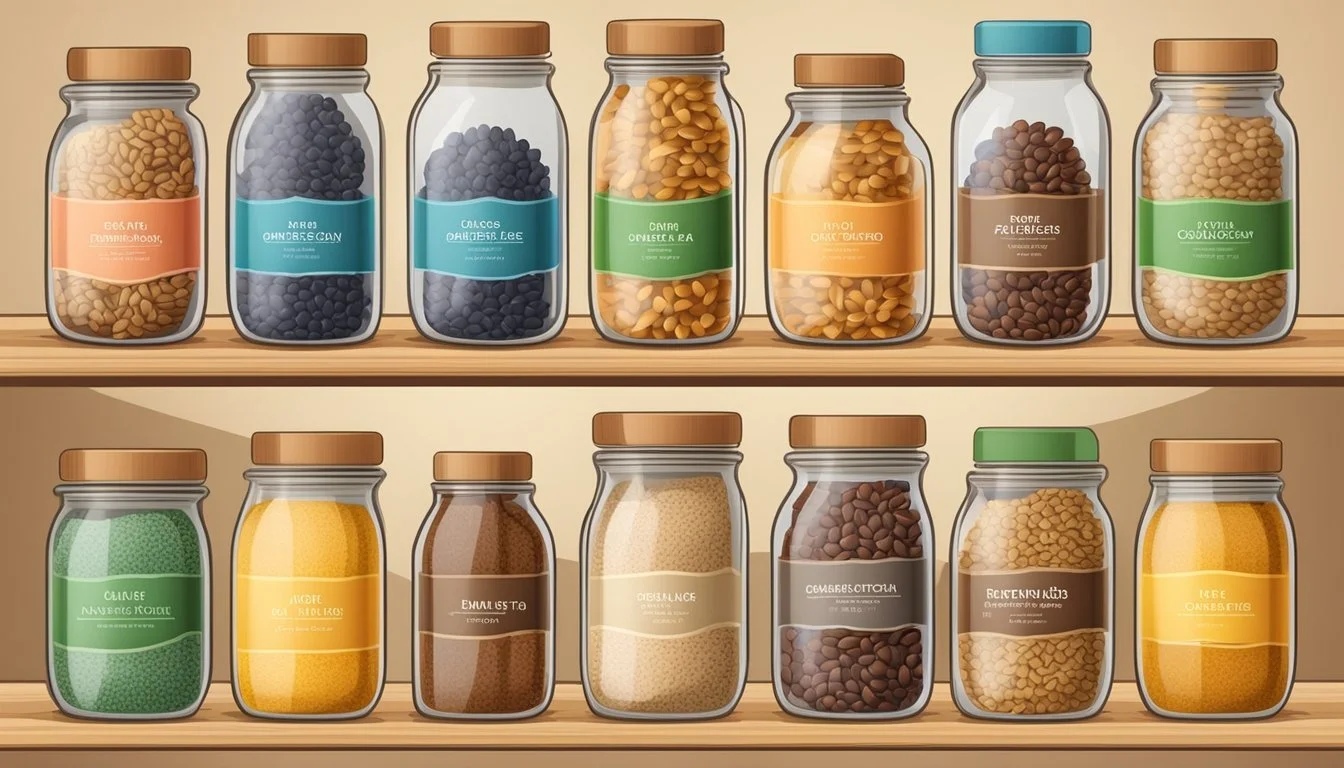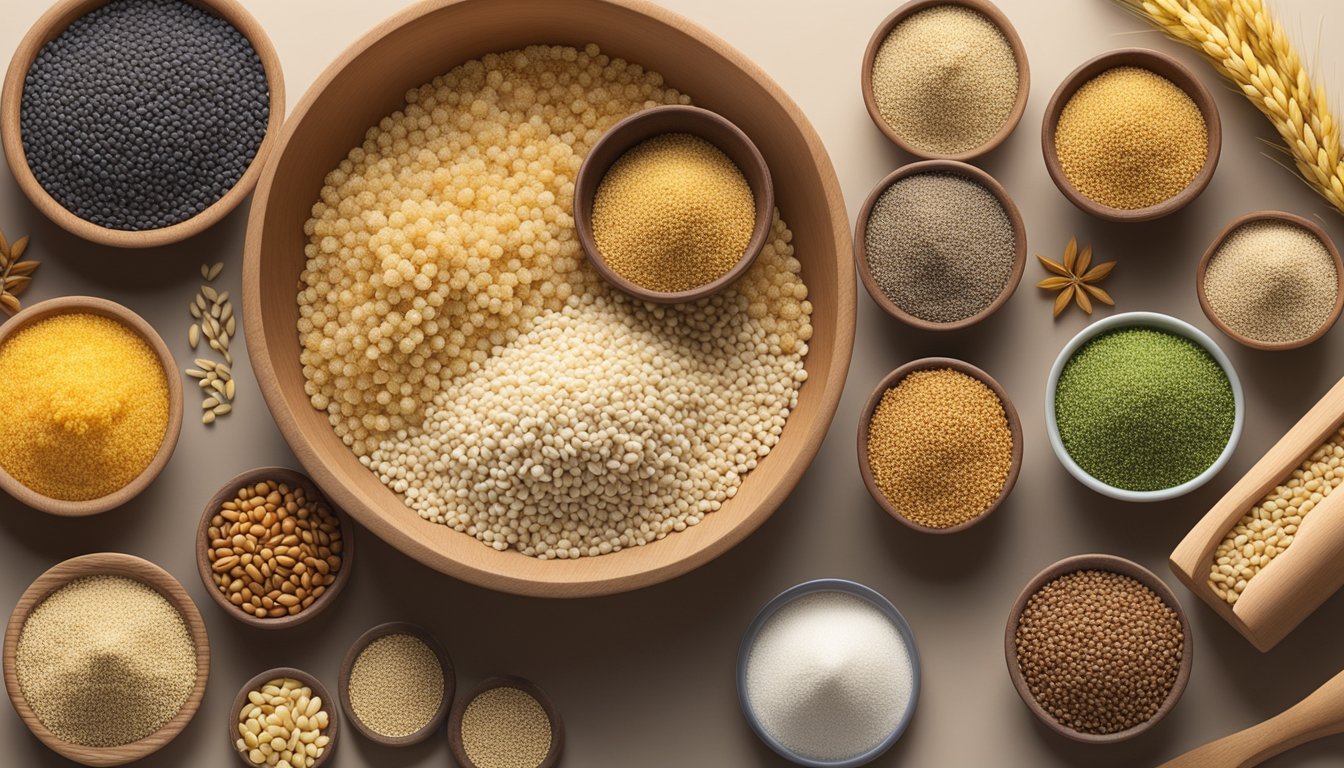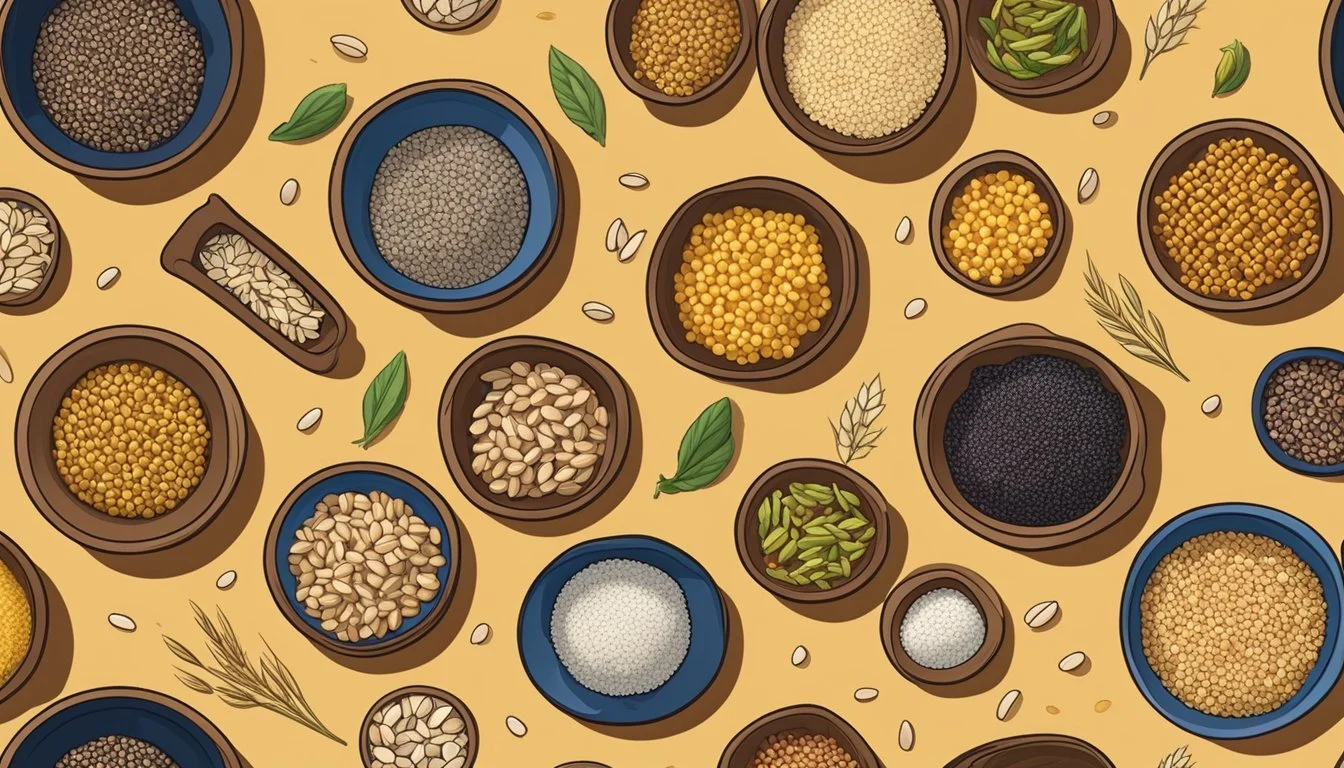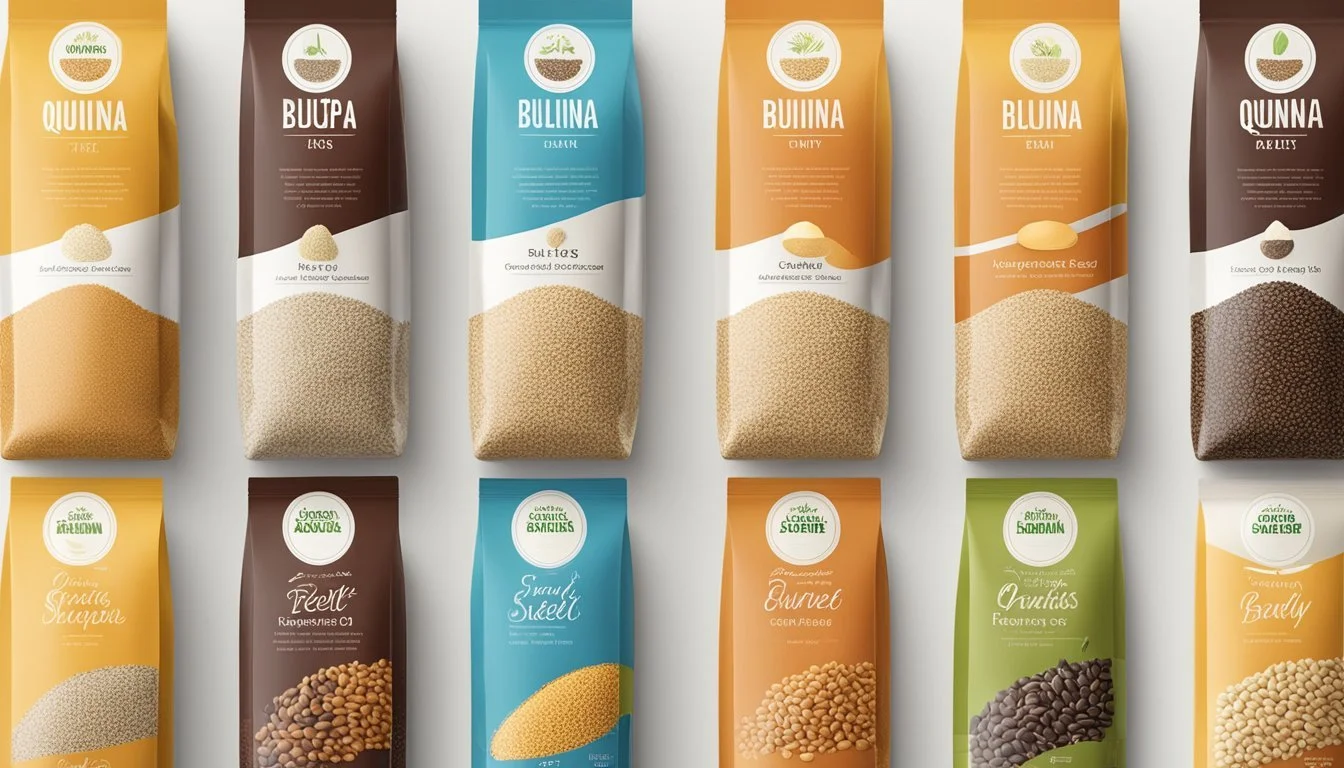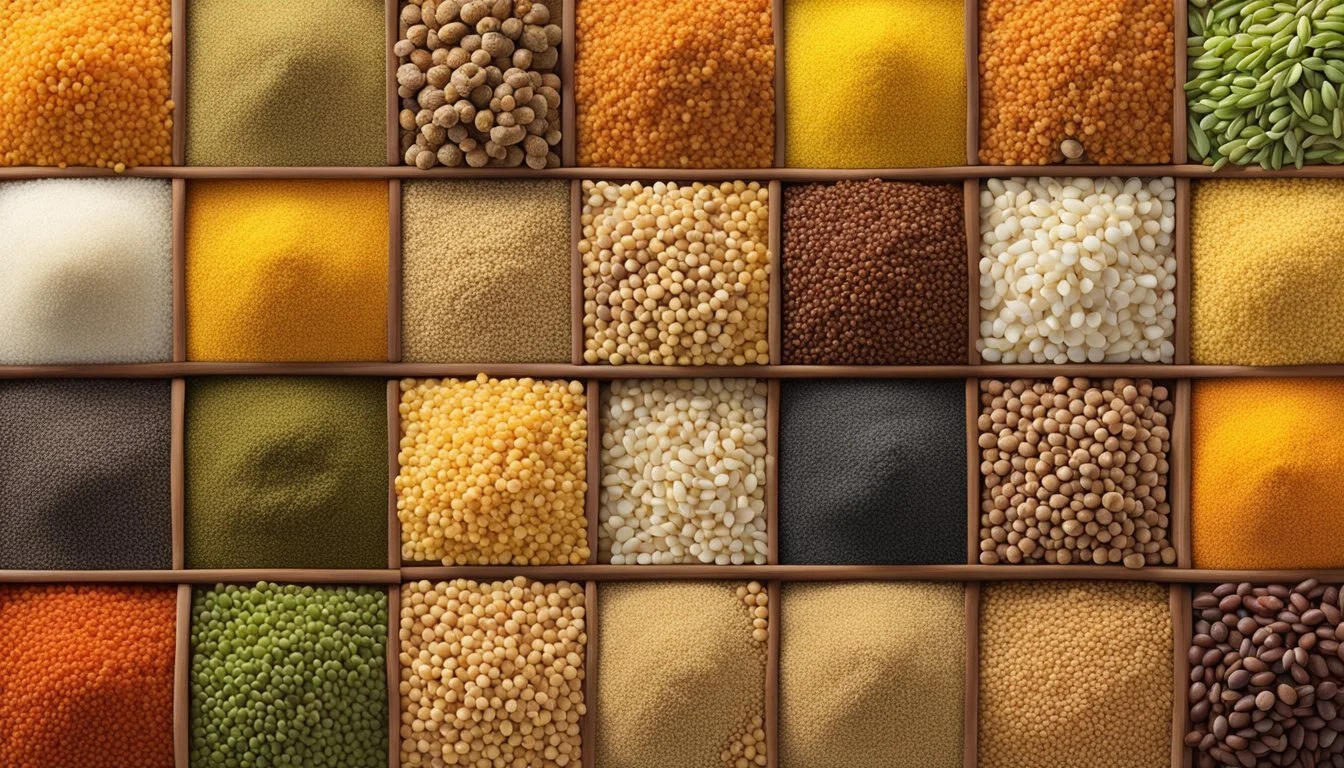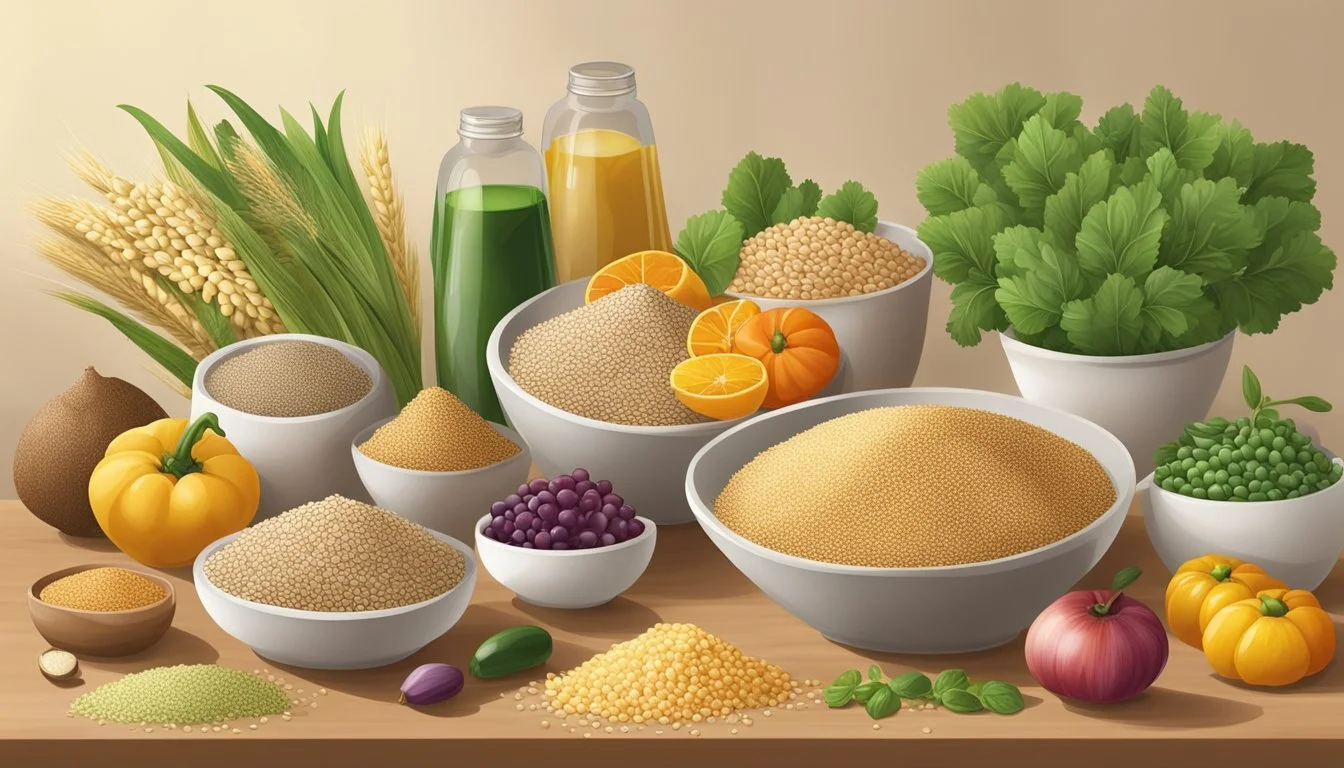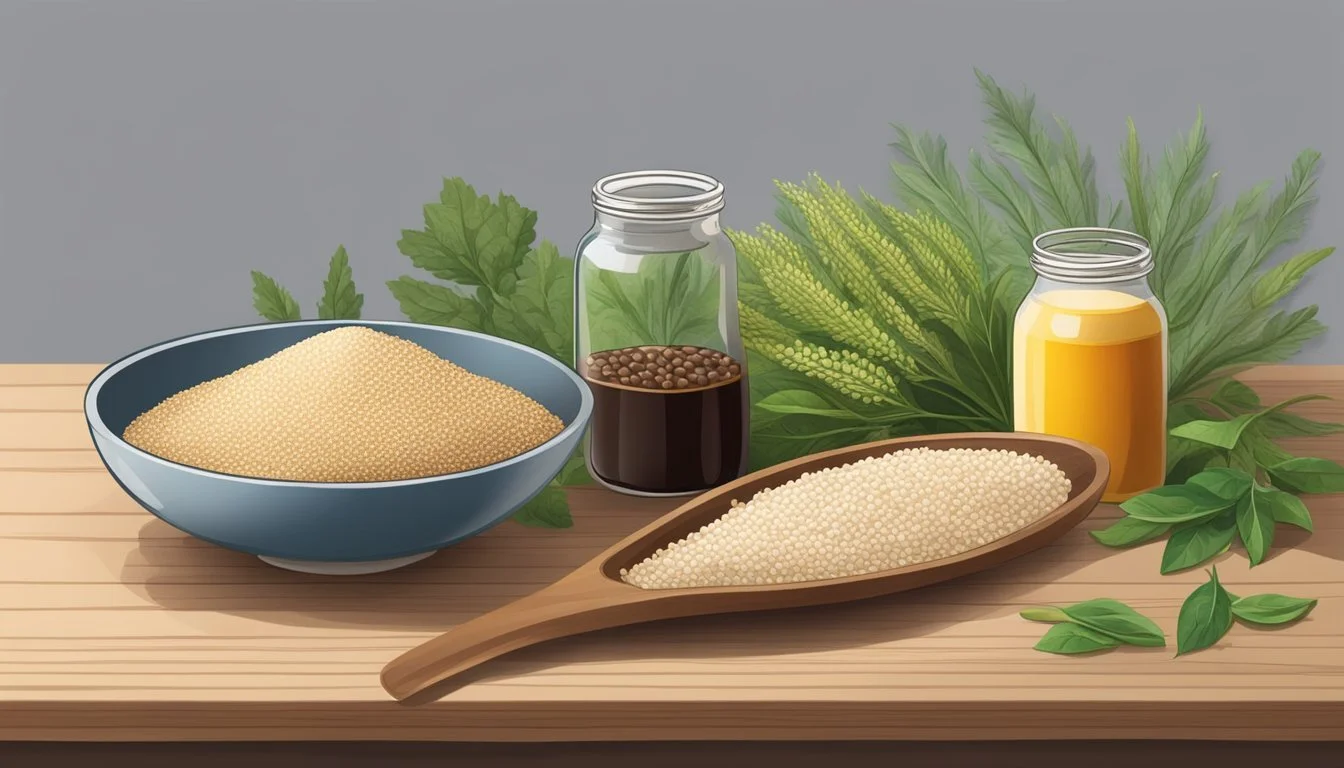Kasha Substitutes
Top Alternatives for Every Recipe
Finding the right substitute for kasha can enhance your culinary creations without sacrificing flavor or nutrition. Buckwheat groats often make an excellent alternative due to their similar texture and versatility in recipes. If you're aiming for a nutty flavor, toasting the groats can mimic the rich taste of kasha effectively.
Quinoa is another viable substitute, offering a similar nutritional profile and adaptable cooking methods. It can be used in pilafs, salads, and even breakfast dishes, making it a flexible choice for various meals.
For those looking for a gluten-free option, millet stands out as a great substitute. Its mild flavor pairs well with a range of ingredients and can easily integrate into your favorite kasha-based recipes.
Understanding Kasha
Kasha, commonly known as roasted buckwheat, has a rich cultural heritage and boasts an impressive nutritional profile. This section explores its origins and cultural significance as well as its health benefits.
Origins and Cultural Significance
Kasha originates from Eastern Europe and is especially prominent in Russian, Polish, and Ukrainian cuisines. It has been a staple food for centuries, often enjoyed in breakfast porridge, pilafs, and side dishes.
Buckwheat, the grain from which kasha is made, is not related to wheat and has been cultivated for over 8,000 years. Historically, it has been valued not just for its hardiness in poor soil conditions but also for its quick growing cycle.
In Jewish cuisine, kasha varnishkes is a notable dish that features kasha mixed with bow-tie pasta, illustrating the grain's versatility and cultural integration. Kasha remains an important dietary component in many cultures due to its adaptability and nourishing properties.
Nutritional Profile
Kasha is a powerhouse of nutrients, rich in protein, fiber, and essential minerals. One cup of cooked kasha provides approximately 6 grams of protein and 5 grams of fiber, making it a filling and energy-sustaining food.
It is high in iron, magnesium, and potassium, which are vital for overall health. Magnesium supports muscle and nerve function, while potassium is crucial for maintaining healthy blood pressure. The high iron content aids in preventing anemia.
Additionally, kasha contains a significant amount of Vitamin B6, important for brain development and function. The grain is also gluten-free, making it an excellent choice for those with gluten intolerance or celiac disease. Combining these nutrients, kasha supports energy production, digestion, and cardiovascular health.
This robust nutritional profile underscores kasha’s status as a beneficial and versatile grain.
The Need for Kasha Substitutes
Kasha substitutes are essential to cater to dietary restrictions and ensure the availability of various grain options. These factors play a critical role in diversifying meals and adhering to specific health requirements.
Dietary Restrictions and Allergies
For individuals with gluten intolerance or celiac disease, finding suitable substitutes for kasha is crucial. Kasha, made from buckwheat, is naturally gluten-free, but contamination during processing can be a concern. Alternatives such as quinoa and rice are naturally gluten-free and safe for those with celiac disease.
Certain allergies also necessitate substitutes. For example, buckwheat allergies require alternatives like millet or amaranth. These substitutes can closely mimic kasha's texture and nutritional benefits, providing a diverse and safe option for those with specific dietary needs.
Availability and Variety
The availability of kasha can vary by location, season, and supply chain factors. In some areas, kasha might be rare or expensive, necessitating the use of more accessible substitutes. Freekeh and bulgur wheat can often be found more easily and can be prepared similarly to kasha.
Substituting kasha adds variety to meals. Using alternatives like farro or barley can introduce new flavors and textures to traditional recipes, enhancing the culinary experience. These grains are also rich in nutrients, making them valuable additions to a diverse diet.
Popular Kasha Substitutes
Substituting kasha in recipes often involves choosing ingredients that have a similar texture, flavor, or nutritional profile. Common substitutes like quinoa, different rice varieties, and bulgur or couscous provide diverse options suited to various culinary needs and dietary preferences.
Quinoa
Quinoa is an excellent substitute for kasha due to its nutritional benefits and versatility. This gluten-free seed is rich in protein, fiber, and essential amino acids. It cooks quickly, usually in about 15 minutes, and has a light, fluffy texture. Quinoa pairs well with savory and sweet dishes, making it ideal for pilafs, salads, and even breakfast bowls. Additionally, it absorbs flavors well, making it a flexible ingredient in many different cuisines.
Rice Varieties
Rice varieties such as brown rice, wild rice, and bamboo rice can also serve as substitutes for kasha. Brown rice is a whole grain rich in fiber and nutrients, offering a chewy texture that works well in salads and pilafs. Wild rice, another whole grain option, has a distinct nutty flavor and chewy consistency. Bamboo rice is less common but provides a unique, mild taste and an appealing green hue. Each rice variety brings different textures and flavors to a dish, enabling creative culinary applications.
Bulgur and Couscous
Bulgur and couscous are both popular grain alternatives that can replace kasha in many recipes. Bulgur, made from cracked wheat, shares a similar nutty flavor and quick cooking time. It is commonly used in salads, pilafs, and tabbouleh. Couscous, either the finer Moroccan or the larger Israeli type, absorbs liquids easily, making it a convenient and fast-cooking option. Both grains offer a similar texture and versatility that can seamlessly fit into dishes traditionally made with kasha.
Substitutes for Cooking Applications
When kasha is unavailable, various grains can serve as effective substitutes in different dishes. The best substitute often depends on the recipe's required texture and flavor.
Soups and Salads
Barley offers a chewy texture and nutty flavor that works well in soups and salads. It can be cooked in water or broth until tender, making it a versatile option. Barley is also nutritious, providing fiber and essential vitamins.
Freekeh stands out for its smoky flavor and high protein content. It can be found in cracked or whole forms, with cooking times ranging from 15-40 minutes. Freekeh pairs well with vegetables and broths in hearty soups and adds a robust flavor to salads.
Quinoa is another suitable substitute, providing a similar nutritional profile. It cooks quickly and offers a mild, nutty flavor. Quinoa can enhance the texture of soups and add varied taste and nutrition to salads.
Casseroles and Pilafs
For casseroles and pilafs, bulgur is an excellent choice. Its coarse texture and quick cooking time make it ideal for these dishes. Bulgur can absorb flavors well and combines seamlessly with meats and vegetables.
Freekeh can also be used, bringing a unique flavor and chewy texture. It adds depth to pilafs and works well in casseroles with robust ingredients like mushrooms and herbs.
Brown rice provides a mild flavor and is gluten-free, making it suitable for various diets. Its whole-grain nature means it contributes important nutrients, while its adaptability lets it blend easily with other ingredients in casseroles and pilafs.
Porridges and Side Dishes
For porridge-like textures, buckwheat groats are an excellent substitute. They can be cooked with water or milk to simulate the texture of kasha porridge. They offer a slightly nuttier flavor and are rich in fiber, promoting digestive health.
Oats can also be used to create a creamy porridge, offering comfort and nutrition. Oats cook quickly and can be flavored with fruits, nuts, and sweeteners to suit personal taste preferences.
As a side dish, brown rice once again proves useful due to its versatility and mild flavor. It can be mixed with herbs, vegetables, and proteins to create a well-rounded side. Brown rice also has numerous health benefits, including aiding in lowering cholesterol.
Texture and Flavor Considerations
When substituting kasha, it's essential to focus on maintaining a similar texture and flavor. This ensures the dish remains authentic and enjoyable.
Selecting the Right Texture
Kasha has a firm texture that holds well in various dishes like pilafs and breakfast bowls. To replicate this, consider grains such as freekeh or buckwheat groats. Freekeh, for instance, is chewy and often retains its structure after cooking, making it ideal for a firm bite.
Additionally, when choosing substitutes, it helps to toast the grain beforehand. Toasting not only enhances the texture but also brings out deeper flavors. For instance, toasting buckwheat before boiling it can significantly improve its robustness and mimic kasha's firmness.
Matching Kasha's Flavor Profile
Kasha has a unique, nutty flavor that distinguishes it in dishes. To replicate this, grains like bulgur or farro can be used. Bulgur offers a slightly nutty taste and cooks relatively quickly, making it a good match for kasha's flavor in most recipes.
Moreover, consider infusing the cooking liquid with broth, herbs, or garlic. This technique enhances the flavor, ensuring the substitute grain carries a similar depth. For instance, cooking freekeh in vegetable broth with herbs can emulate the hearty taste of kasha.
When selecting a substitute, always consider the flavor changes they might introduce to the dish and adjust seasonings accordingly. This approach ensures the final dish remains flavorful and true to its inspiration.
Culinary Inspirations and Recipes
Kasha can be used in a multitude of dishes from various global cuisines and can be adapted in numerous recipes. This section covers a few global dishes using kasha, recipe adaptations, and essential cooking tips.
Global Dishes
Kasha, with its nutty flavor, is a staple in Ashkenazi Jewish cuisine. Dishes like kasha varnishkes—a mix of kasha and bowtie pasta—are well-regarded.
Eastern European meals often feature kasha as a stuffing for vegetables or as a side dish. In Middle Eastern cuisine, kasha can substitute bulgur in kibbeh, giving a unique twist to this classic dish. Greek yogurt paired with kasha and berries provides a balanced and nutritious breakfast.
Recipe Adaptations
Incorporating kasha into existing recipes broadens the culinary possibilities. For instance:
Stuffed Vegetables: Replace rice or quinoa with kasha for a nutty flavor and firmer texture.
Salads: Use kasha as a base for salads, combining it with fresh greens, feta, and olives.
Desserts: Add kasha to savory cakes or pastries for added crunch.
The Prep Time and Cook Time for these recipes are often short, making them suitable for quick meals.
Cooking Tips and Techniques
Properly preparing kasha is key to achieving the desired texture and flavor:
Toasting: Toast kasha dry in a pan for a rich, nutty base.
Liquid Ratio: Use 1.5 to 2 cups of water or broth per cup of kasha.
Cooking: Simmer on low heat to avoid rapid moisture loss and to puff up the grains.
For kasha varnishkes, sautéing onions with butter and combining them with cooked kasha enhances the dish's flavor.
Health and Nutrition Concerns
Kasha, made from buckwheat groats, offers various health benefits and nutritional advantages. It is important to compare its dietary impact and nutritional profile with other common substitutes.
Dietary Impact
Kasha is known for its high fiber content, providing 4.5 grams of fiber per cooked cup, which aids in digestion and reduces the risk of constipation.
Its high protein content makes it beneficial for muscle repair and growth. Kasha is also a good source of essential vitamins and minerals. It contains significant amounts of iron, magnesium, and potassium. These nutrients support overall bodily functions, including energy production and maintaining heart health.
Kasha is gluten-free, making it a suitable option for those with celiac disease or gluten intolerance. However, it's crucial to ensure it's not processed on shared equipment with gluten-containing grains to avoid contamination.
Kasha vs. Substitutes
When comparing kasha to other substitutes like quinoa or bulgur, several differences arise. Quinoa is also a high-protein, gluten-free grain. Nevertheless, quinoa offers slightly higher amounts of certain amino acids than kasha.
Bulgur, while nutritious, contains gluten and may not be suitable for those with gluten sensitivities. It has a different texture and a milder taste compared to the nuttier flavor of kasha.
In terms of micronutrients, kasha offers a robust profile rich in iron and magnesium, whereas substitutes like rice might fall short. For those focused on digestive health, the fiber content in kasha makes it a preferable choice over lower-fiber grains such as white rice.
Conclusion
Kasha offers unique nutty flavors and a satisfying texture in many dishes. However, when it's not available, several substitutes can step in effectively.
Quinoa is a highly nutritious option, providing a gluten-free alternative with a similar texture.
Farro has a chewy consistency and works well in grain bowls and salads.
Millet, a small and mild-flavored grain, can replace kasha in most recipes without altering the dish significantly.
Barley offers a slightly chewy texture and a subtle flavor that pairs well in soups and pilafs. For a gluten-free swap, ensure it's processed separately from gluten-containing grains.
Freekeh is another excellent substitute, with its smoky essence and firm texture making it ideal for varied culinary uses.
Rice, versatile and common, can be a stand-in for kasha in pilafs, casseroles, and stir-fries.
Lastly, buckwheat groats, toasted or plain, align closely with kasha's profile, both in taste and texture.
Table of Kasha Substitutes:
Substitute Texture Best Used In Quinoa Light and Fluffy Salads, Pilafs Farro Chewy Grain Bowls, Salads Millet Mild and Small General Recipes Barley Slightly Chewy Soups, Stews, Pilafs Freekeh Firm and Smoky Diverse Culinary Uses Rice Versatile Pilafs, Casseroles, Stir-Fries Buckwheat Groats Nutty and Firm Direct Kasha Replacement
By understanding these substitutes, one can continue to create flavorful and nutritious dishes even in the absence of kasha.

